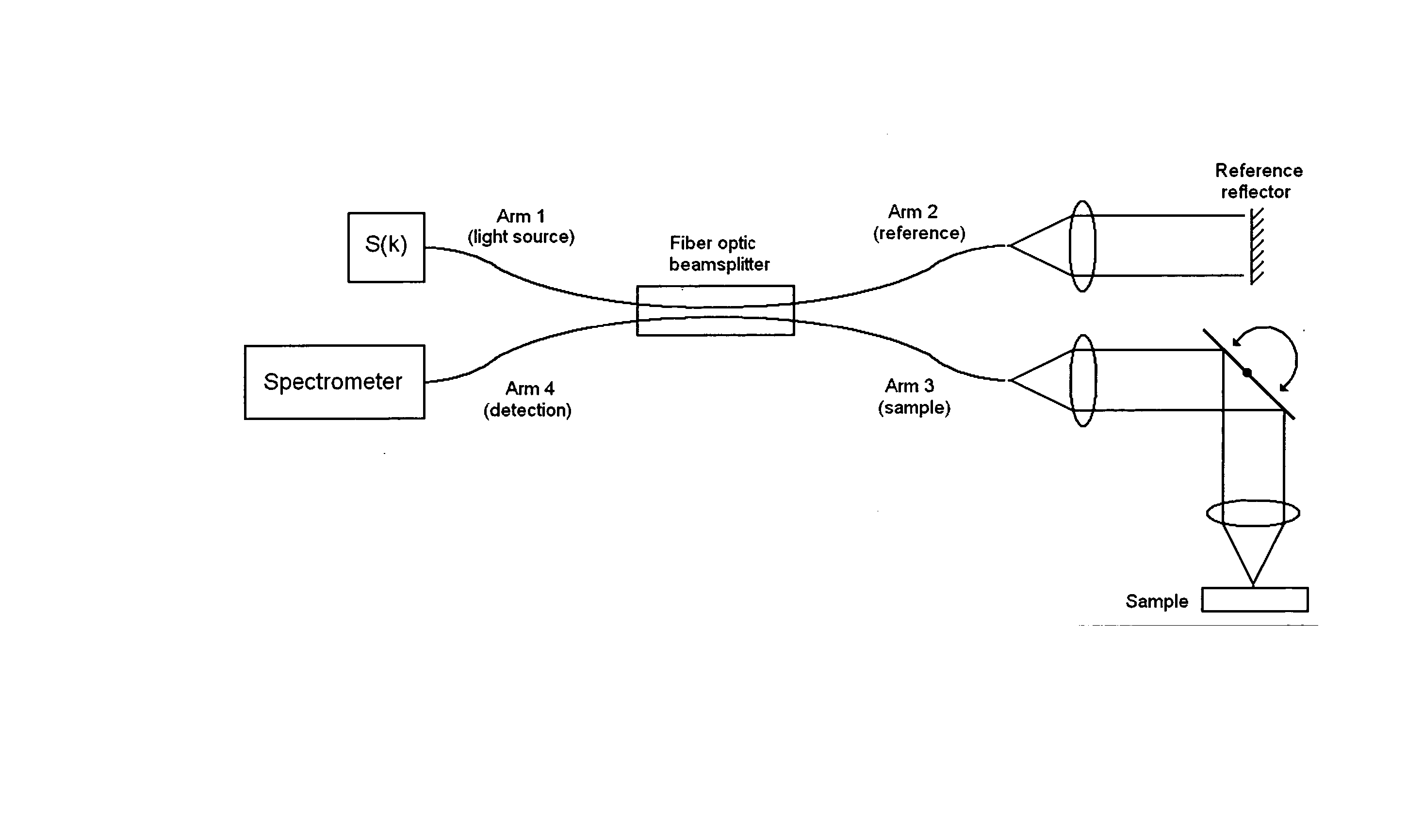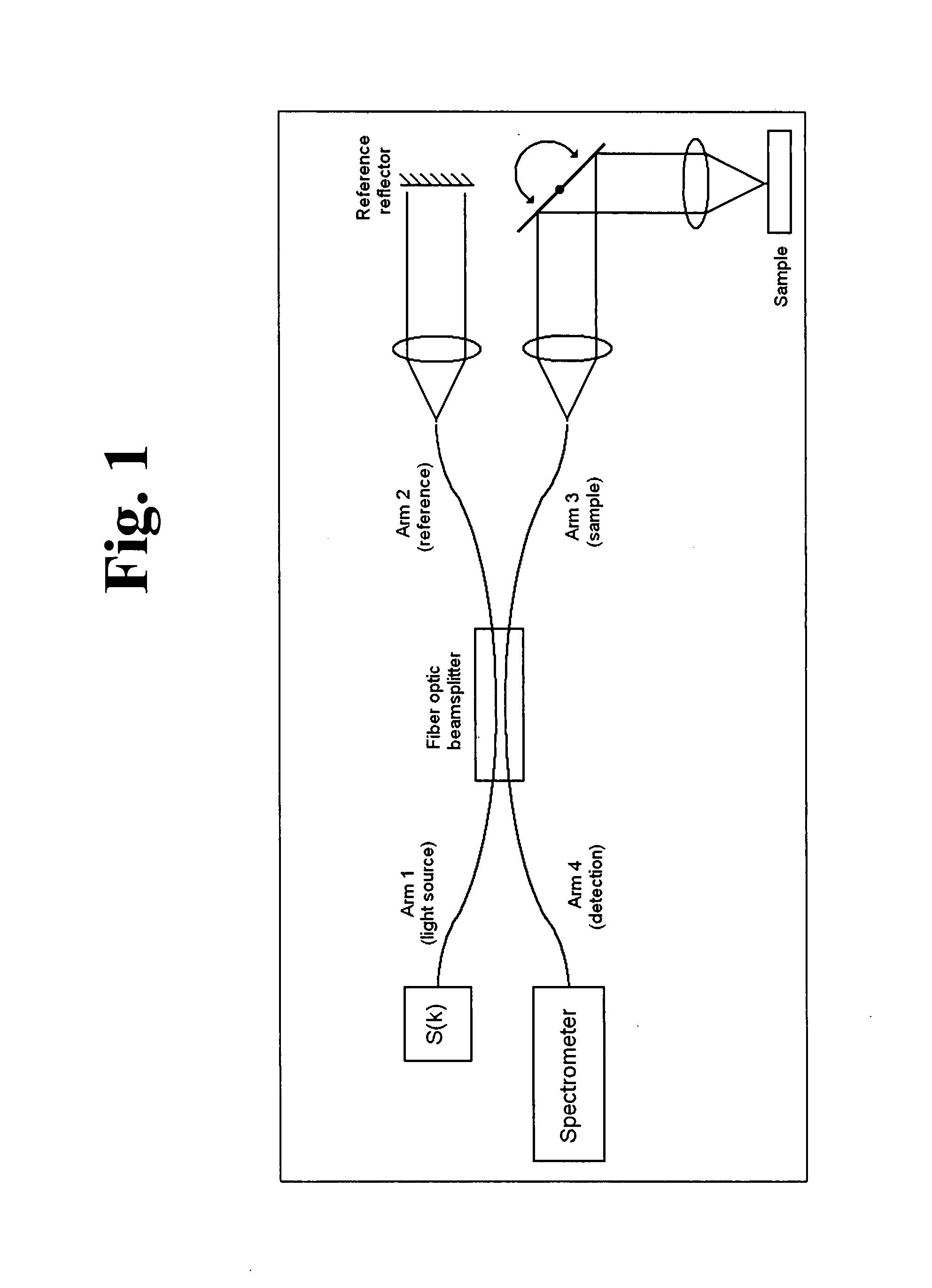Dynamic motion contrast and transverse flow estimation using optical coherence tomography
- Summary
- Abstract
- Description
- Claims
- Application Information
AI Technical Summary
Benefits of technology
Problems solved by technology
Method used
Image
Examples
Embodiment Construction
[0015] The OCT system used for the data presented herein is a spectral domain optical coherence tomography (SDOCT) setup as shown in FIG. 1, with a fiber-optic interferometer used to split the light between a reference arm and a sample arm. The acquisition and analysis techniques described herein do not depend on the type of OCT system used, only on the number of intensity and phase samples taken as well as the speed of each depth reflectivity measurement, called an A-scan.
[0016] The phase change Δφ(zi,T) measured for a given depth zi for a time separation T is a combination of several factors effecting the measurement:
Δφ(zi,T)=Δφmotion,scatterer(zi,T)+Δφmotion,bulk(T)+Δφerror,SNR(zi)+Δφerror,other(zi)
[0017] The phase change Δφ(zi,T) contains not only the individual motion of the scatterer at the depth zi which is designated by Δφmotion,scatterer(zi,T) (which is the motion of interest), but it also contains the bulk relative motion between the sample and the system along the imag...
PUM
 Login to View More
Login to View More Abstract
Description
Claims
Application Information
 Login to View More
Login to View More - R&D
- Intellectual Property
- Life Sciences
- Materials
- Tech Scout
- Unparalleled Data Quality
- Higher Quality Content
- 60% Fewer Hallucinations
Browse by: Latest US Patents, China's latest patents, Technical Efficacy Thesaurus, Application Domain, Technology Topic, Popular Technical Reports.
© 2025 PatSnap. All rights reserved.Legal|Privacy policy|Modern Slavery Act Transparency Statement|Sitemap|About US| Contact US: help@patsnap.com



